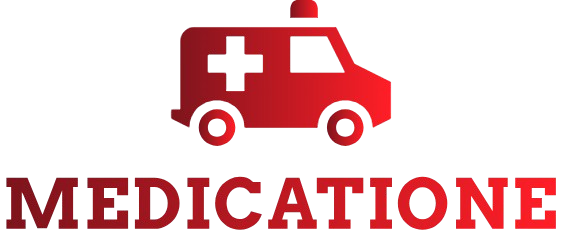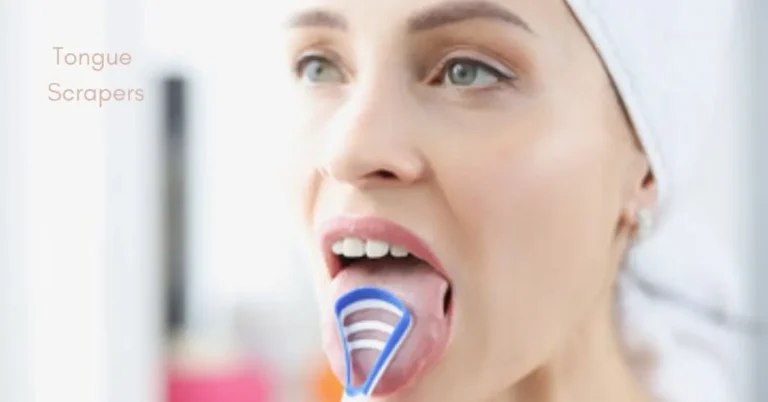Oral hygiene is a cornerstone of overall health, and while most people focus on brushing and flossing, there is another tool that is gaining popularity for its numerous benefits: the tongue scraper. Often overlooked, this simple device can make a significant difference in your oral health, breath, and even your overall well-being. This comprehensive guide will explore everything you need to know about tongue scrapers, from their history and benefits to how to use them and how to choose the right one for your needs.
Introduction to Tongue Scrapers
A tongue scraper is a tool specifically designed to clean the surface of the tongue. It is typically a small, flat instrument made from metal, plastic, or silicone, with a curved edge that is used to remove debris, bacteria, and dead cells from the tongue’s surface. While it may seem like a modern invention, tongue scraping has been practiced for centuries in various cultures around the world.
History and Cultural Significance
The practice of tongue scraping has ancient roots. It is mentioned in ancient Ayurvedic texts as part of a comprehensive oral hygiene routine known as “dinacharya.” In traditional Ayurvedic medicine, tongue scraping is believed to help balance the body’s energies, improve digestion, and remove toxins.
In addition to its use in Ayurveda, tongue scraping was also practiced by the Romans, who valued cleanliness and oral hygiene. Today, tongue scraping is recognized and recommended by modern dental professionals as a beneficial addition to regular oral care routines.
The Anatomy of the Tongue and Its Role in Oral Health
To understand why tongue scraping is important, it’s crucial to know a bit about the anatomy of the tongue. The tongue is covered in tiny structures called papillae, which help with taste and also provide a surface for bacteria to adhere to. These bacteria, along with food debris and dead cells, can accumulate on the tongue, leading to bad breath, plaque buildup, and a host of other oral health issues.
The tongue is also connected to various other parts of the body through nerves and muscles, making its health integral to overall well-being. Poor tongue hygiene can affect taste, digestion, and even lead to systemic health issues due to the spread of harmful bacteria.
The Benefits of Tongue Scraping
a. Fresher Breath
One of the most immediate and noticeable benefits of tongue scraping is fresher breath. The bacteria that accumulate on the tongue can produce volatile sulfur compounds (VSCs), which are responsible for bad breath. By regularly scraping the tongue, you remove these bacteria and the debris they feed on, significantly reducing the presence of VSCs.
b. Improved Taste Sensation
Over time, a coating of bacteria, food particles, and dead cells can dull your taste buds. By cleaning your tongue with a scraper, you remove this coating, allowing your taste buds to function more effectively. This can enhance your ability to taste and enjoy food.
c. Reduction in Plaque Buildup
The bacteria on your tongue can easily transfer to your teeth and gums, contributing to plaque formation and gum disease. Regular tongue scraping helps to reduce the bacterial load in your mouth, thereby decreasing the risk of plaque buildup and associated dental problems.
d. Enhanced Overall Health
The mouth is the gateway to the rest of the body, and the health of your oral cavity is closely linked to your overall health. Poor oral hygiene has been associated with various systemic conditions, including heart disease, diabetes, and respiratory infections. By improving your oral hygiene with practices like tongue scraping, you may also reduce your risk of these and other health issues.
e. Promotes a Healthy Digestive System
In Ayurvedic medicine, tongue scraping is believed to stimulate the internal organs and promote better digestion. By removing toxins from the tongue, you prevent them from being reabsorbed into the body, thus aiding in digestion and overall health.
How to Use a Tongue Scraper Effectively
Using a tongue scraper is simple, but there are a few key steps to ensure you do it correctly and get the maximum benefit.
Step 1: Choose Your Scraper
Select a tongue scraper that is comfortable for you to use. Metal scrapers (made from stainless steel or copper) are durable and easy to clean, while plastic scrapers are lightweight and often more flexible.
Step 2: Stick Out Your Tongue
Stand in front of a mirror, open your mouth, and extend your tongue as far as possible. This will give you the best access to the back of your tongue, where most bacteria and debris tend to accumulate.
Step 3: Scrape from Back to Front
Place the scraper at the back of your tongue (as far back as is comfortable) and gently pull it forward, applying light pressure. Be careful not to press too hard, as this can irritate the tongue. Repeat this process 3-5 times, rinsing the scraper with water between each pass.
Step 4: Rinse Your Mouth
After you’ve finished scraping, rinse your mouth with water to remove any loosened debris. For added freshness, you can also rinse with a mouthwash.
Step 5: Clean Your Scraper
After each use, thoroughly clean your tongue scraper with soap and water, and store it in a clean, dry place.
Types of Tongue Scrapers: Which One Is Right for You?
Tongue scrapers come in various materials and designs, each with its own set of advantages. Here’s a closer look at the most common types:
a. Metal Tongue Scrapers
These are typically made from stainless steel or copper. They are durable, easy to clean, and often more effective at removing debris than other types. Copper has natural antimicrobial properties, which can help prevent the buildup of bacteria on the scraper itself.
b. Plastic Tongue Scrapers
Plastic scrapers are lightweight, affordable, and often more flexible, making them easier to use for some people. However, they may not last as long as metal scrapers and can become less effective over time.
c. Silicone Tongue Scrapers
Silicone scrapers are soft and gentle on the tongue, making them a good choice for people with sensitive tongues or those who prefer a softer scraping action. They are also easy to clean and maintain.
d. Dual-Action Tongue Scrapers
Some tongue scrapers feature a dual-action design with both a scraping edge and a brushing surface. These can provide a more thorough cleaning by loosening debris with the brush and then removing it with the scraper.
Common Myths and Misconceptions About Tongue Scraping
Despite its benefits, there are several myths and misconceptions surrounding tongue scraping that can deter people from incorporating it into their routine.
Myth 1: Tongue Scraping Is Painful
When done correctly, tongue scraping should not be painful. It’s important to use a gentle touch and not to press too hard. If you experience pain or discomfort, you may be scraping too hard or using a scraper that is too rigid.
Myth 2: Toothbrushes Are Just as Effective
While brushing your tongue with a toothbrush can help remove some debris, it is not as effective as using a tongue scraper. The bristles of a toothbrush are not designed to scrape off the biofilm that accumulates on the tongue, and they may even push bacteria further into the tongue’s surface.
Myth 3: Tongue Scraping Causes Gagging
Some people worry that using a tongue scraper will trigger their gag reflex. However, with practice, most people can learn to control their gag reflex by scraping gently and not going too far back on the tongue.
Myth 4: Tongue Scraping Is Unnecessary
Given the role of the tongue in harboring bacteria and debris, tongue scraping is a valuable addition to any oral hygiene routine. It provides benefits that brushing and flossing alone cannot achieve.
Integrating Tongue Scraping into Your Oral Hygiene Routine
Adding tongue scraping to your daily oral care routine is easy and can be done in just a few minutes. Here’s how to make it a regular habit:
- Start Small: Begin by scraping your tongue once a day, preferably in the morning before eating or drinking. As you become more comfortable with the practice, you can increase the frequency to twice a day if desired.
- Combine with Brushing and Flossing: Tongue scraping is most effective when combined with regular brushing and flossing. Consider making it the first step in your oral care routine, followed by brushing, flossing, and rinsing.
- Set a Reminder: If you’re prone to forgetting, set a reminder on your phone or place your tongue scraper somewhere visible, such as next to your toothbrush.
Conclusion
Tongue scraping is a simple, yet highly effective practice that can significantly improve your oral hygiene and overall health. By removing bacteria, debris, and dead cells from the surface of your tongue, you can enjoy fresher breath, better taste, reduced plaque buildup, and a healthier mouth. With a variety of tongue scrapers available, it’s easy to find one that suits your needs and preferences.
Integrating tongue scraping into your daily routine is a small commitment with big rewards. Whether you’re new to the practice or looking to enhance your current oral hygiene habits, a tongue scraper is a valuable tool that deserves a place in your bathroom. So why not give it a try? Your mouth—and your overall health—will thank you.
FAQ
Q1: How often should I scrape my tongue?
Most dental professionals recommend scraping your tongue once or twice a day. However, you can adjust the frequency based on your personal preference and oral hygiene needs.
Q2: Can children use tongue scrapers?
Yes, children can use tongue scrapers, but it’s important to choose a scraper that is appropriate for their age and size. Make sure they understand how to use it gently and supervise them until they are comfortable with the process.
Q3: Is tongue scraping safe during pregnancy?
Tongue scraping is generally safe during pregnancy and can be a helpful way to maintain oral hygiene, especially if morning sickness has led to increased bacteria in the mouth. However, if you have any concerns, it’s always a good idea to consult with your healthcare provider.
Q4: Can tongue scraping help with thrush?
Tongue scraping can help reduce the appearance of thrush by removing some of the white coating on the tongue. However, it is not a cure for thrush, which is a fungal infection that requires medical treatment.
Q5: What if I notice blood while scraping my tongue?
If you notice a small amount of blood, it could be a sign that you are scraping too hard. Try using a gentler touch. If the bleeding persists or is significant, consult your dentist, as it could indicate an underlying issue.

